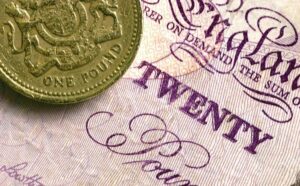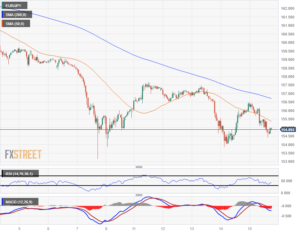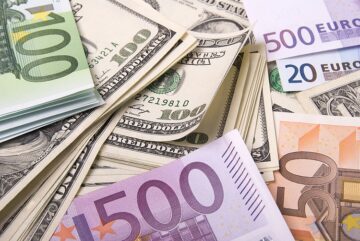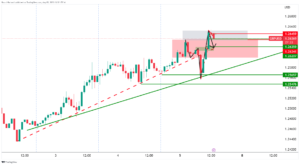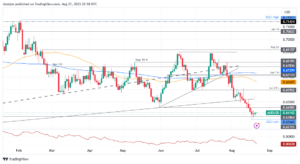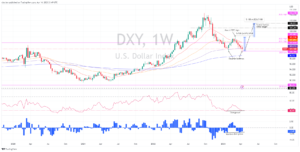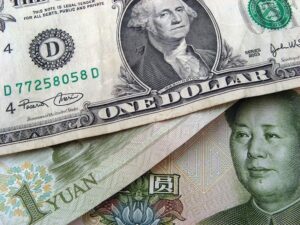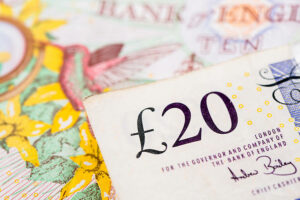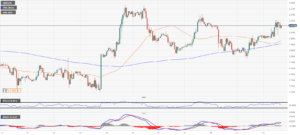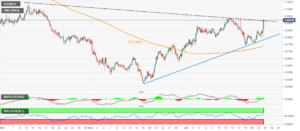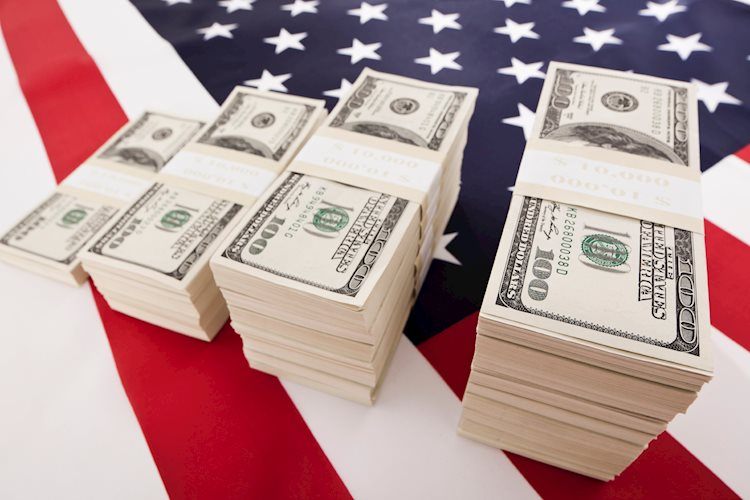
- The US Dollar takes another step back after US opening bell on Tuesday.
- Traders see BoJ missing the window of opportunity for a hike.
- The US Dollar Index recovered on Friday, though not enough to change sentiment.
The US Dollar (USD) is softer in the initial hours after the US opening bell on Tuesday. Markets are disregarding comments from European Central Bank (ECB) and Federal Reserve (Fed) speakers and rather focus on the easing of geopolitical tensions in the Red Sea. The US Dollar fades a touch with no safe haven inflow occuring after Monday’s events, and seeing the US Dollar Index heading lower towards 102.
On the economic front, the Housing Data is not helping neither with no big moves and even contractions in Building Permits. Meanwhile geopolitical tensions in the Red Sea are easing fast with all major freight shipping companies deviating their float from the region. This means longer and more expensive travel routes via Africa, which means some inflationary pressures coming for January for the consumer.
Daily digest Market Movers: Markets ignoring central bank speakers
- US Federal Reserve Member Tom Barkin from the Richmond Fed said in an interview with Yahoo! Finance that the Fed sees some economy segments weakening under the pressure of elevated rates. Rate cut in September is not a committed forward guidance, but a forecast based on current economic conditions.
- The European Central Bank (ECB) is trying to backtrack on earlier statements that rate cuts for 2024 are not on the cards. ECB member François Villeroy de Galhau said this Tuesday morning that the ECB should cut in 2024 after a plateau of holding rates steady.
- The Bank of Japan (BoJ) has probably missed its window of opportunity to hike out of negative rates. BoJ Governor Kazuo Ueda said that Japan is heading to 2% inflation under current conditions, and even gave forward guidance that the January meeting is not the right moment to adjust monetary policy. It looks that both inflation and macroeconomic conditions for Japan are heading back to normal levels which might never demand for monetary policy to strengthen.
- Housing data was a bit of a let down for markets:
- Monthly Building Permits went down by 2.5% from 1.498 million to 1.46 million.
- The November Housing Starts number jumped by 14.8% from 1.359 million to 1.56 million.
- The Redbook Index jumped marginally from 3.4% to 3.6%.
- Asian equities are welcoming the standstill at the BoJ, and are popping higher. The Japanese Nikkei index is up over 1.4%. European and US equities are going sideways. In the US tech giant Apple is weighing now that the Chinese government has completely barred Apple products on the work floor. Domestically Apple is facing headwinds as well, as its Iwatch Ultra and 9 series are halted for sale because of a patent dispute on one of its technologies. US equities are up mildly, less than 0.50% on all three indices.
- The CME Group’s FedWatch Tool shows that markets are pricing in a 91.7% chance that the Federal Reserve will keep interest rates unchanged at its January 31 meeting. Around 8.3% expect the first cut already to take place.
- The benchmark 10-year US Treasury Note trades near 3.89%, and looks to be forming a floor.
US Dollar Index Technical Analysis: Nothing to be done
Central Banks are having busy days in this very last normal trading week of 2023. From left and right central bankers are pulling everything out of their toolkit to tweak earlier mismanaged monetary policy communication. For the Federal Reserve, several members are pushing back against the markets that cuts are not going to come that quick. Several ECB members are now also backtracking and saying that cuts will come for sure in 2024 after European Central Bank President Christine Lagarde surprised them by saying cuts are not under consideration at all, at last week’s meeting. The narrative is changing again, and could switch back in full in favour of the US Dollar Index (DXY).
Still, US Dollar bulls have their work cut out to salvage what was lost last week. On the daily chart, look for 103.00 as the first level to keep an eye on. Once trading above there, the 200-day SMA at 103.50 is the next important level to get to in its recovery.
To the downside, the pivotal level at 101.70, the low of August 4 and 10 is vital to hold. Once broken, look for 100.82, which aligns with the bottoms from February and April. Should that level snap, nothing will stand in the way of DXY heading to the sub-100 region.
Risk sentiment FAQs
In the world of financial jargon the two widely used terms “risk-on” and “risk off” refer to the level of risk that investors are willing to stomach during the period referenced. In a “risk-on” market, investors are optimistic about the future and more willing to buy risky assets. In a “risk-off” market investors start to ‘play it safe’ because they are worried about the future, and therefore buy less risky assets that are more certain of bringing a return, even if it is relatively modest.
Typically, during periods of “risk-on”, stock markets will rise, most commodities – except Gold – will also gain in value, since they benefit from a positive growth outlook. The currencies of nations that are heavy commodity exporters strengthen because of increased demand, and Cryptocurrencies rise. In a “risk-off” market, Bonds go up – especially major government Bonds – Gold shines, and safe-haven currencies such as the Japanese Yen, Swiss Franc and US Dollar all benefit.
The Australian Dollar (AUD), the Canadian Dollar (CAD), the New Zealand Dollar (NZD) and minor FX like the Ruble (RUB) and the South African Rand (ZAR), all tend to rise in markets that are “risk-on”. This is because the economies of these currencies are heavily reliant on commodity exports for growth, and commodities tend to rise in price during risk-on periods. This is because investors foresee greater demand for raw materials in the future due to heightened economic activity.
The major currencies that tend to rise during periods of “risk-off” are the US Dollar (USD), the Japanese Yen (JPY) and the Swiss Franc (CHF). The US Dollar, because it is the world’s reserve currency, and because in times of crisis investors buy US government debt, which is seen as safe because the largest economy in the world is unlikely to default. The Yen, from increased demand for Japanese government bonds, because a high proportion are held by domestic investors who are unlikely to dump them – even in a crisis. The Swiss Franc, because strict Swiss banking laws offer investors enhanced capital protection.
- SEO Powered Content & PR Distribution. Get Amplified Today.
- PlatoData.Network Vertical Generative Ai. Empower Yourself. Access Here.
- PlatoAiStream. Web3 Intelligence. Knowledge Amplified. Access Here.
- PlatoESG. Carbon, CleanTech, Energy, Environment, Solar, Waste Management. Access Here.
- PlatoHealth. Biotech and Clinical Trials Intelligence. Access Here.
- Source: https://www.fxstreet.com/news/us-dollar-to-get-back-in-focus-with-boj-disappointing-markets-202312191230
- :has
- :is
- :not
- $UP
- 1
- 10
- 100
- 102
- 14
- 2%
- 2% Inflation
- 2023
- 2024
- 31
- 33
- 46
- 50
- 70
- 8
- 9
- 91
- a
- About
- above
- activity
- adjust
- africa
- African
- After
- again
- against
- Aligns
- All
- already
- also
- an
- analysis
- and
- Animate
- Another
- Apple
- April
- ARE
- around
- AS
- Assets
- At
- AUD
- AUGUST
- Australian
- Australian dollar
- back
- Bank
- bank of japan
- Bank of Japan (BoJ)
- bankers
- Banking
- Banks
- based
- BE
- because
- Bell
- Benchmark
- benefit
- Big
- Bit
- boj
- Bonds
- both
- Bringing
- Broken
- Building
- Bulls
- busy
- but
- buy
- by
- CAD
- Canadian
- Canadian Dollar
- capital
- Cards
- central
- Central Bank
- central bankers
- certain
- Chance
- change
- changing
- chf
- chinese
- CME
- come
- coming
- comments
- committed
- Commodities
- commodity
- Communication
- Companies
- completely
- conditions
- consideration
- consumer
- content
- could
- crisis
- cryptocurrencies
- currencies
- Currency
- Current
- Cut
- cuts
- daily
- data
- Days
- Debt
- Default
- Demand
- Digest
- Dispute
- disregarding
- Dollar
- dollar index
- Domestic
- domestically
- down
- downside
- due
- dump
- during
- Dxy
- Earlier
- easing
- ECB
- Economic
- Economic Conditions
- economies
- economy
- elevated
- ends
- enhanced
- enough
- Equities
- especially
- Ether (ETH)
- European
- European Central Bank
- Even
- events
- everything
- Except
- expanded
- expect
- expensive
- exports
- eye
- facing
- Fades
- FAQ
- FAST
- February
- Fed
- Federal
- federal reserve
- finance
- financial
- First
- Float
- Floor
- Focus
- For
- Forecast
- foresee
- Forward
- Franc
- freight
- Friday
- from
- front
- full
- future
- FX
- Gain
- gave
- geopolitical
- get
- giant
- Go
- going
- Gold
- Government
- government bonds
- Governor
- greater
- Group’s
- Growth
- guidance
- Have
- haven
- having
- Heading
- headwinds
- heavily
- heavy
- heightened
- Held
- helping
- High
- higher
- Hike
- hold
- holding
- HOURS
- housing
- HTTPS
- if
- important
- in
- increased
- index
- Indices
- inflation
- Inflationary
- Inflationary pressures
- initial
- interest
- Interest Rates
- Interview
- into
- Investors
- IT
- ITS
- January
- Japan
- Japanese
- Japanese Yen
- jargon
- jpg
- JPY
- Keep
- largest
- Last
- Laws
- left
- less
- let
- Level
- levels
- like
- longer
- Look
- LOOKS
- lost
- Low
- lower
- Macroeconomic
- major
- Market
- Markets
- materials
- means
- Meanwhile
- meeting
- member
- Members
- might
- million
- minor
- missed
- missing
- Mode
- modest
- module
- moment
- Monday
- Monetary
- Monetary Policy
- more
- morning
- most
- Movers
- moves
- NARRATIVE
- Nations
- Near
- negative
- Neither
- never
- New
- New Zealand
- next
- no
- normal
- note
- nothing
- November
- now
- number
- NZD
- of
- off
- offer
- on
- once
- ONE
- opening
- Opportunity
- Optimistic
- out
- Outlook
- over
- patent
- period
- periods
- permits
- pivotal
- Place
- plato
- Plato Data Intelligence
- PlatoData
- policy
- positive
- president
- pressure
- price
- pricing
- probably
- Products
- proportion
- protection
- pulling
- Pushing
- Quick
- rand
- Rate
- Rates
- rather
- Raw
- recovery
- Red
- refer
- region
- relatively
- Reserve
- Reserve Currency
- return
- right
- Rise
- Risk
- Risky
- routes
- ruble
- s
- safe
- Safe Haven
- Said
- sale
- saying
- SEA
- see
- seeing
- seen
- sees
- segments
- sentiment
- September
- Series
- several
- shines
- Shipping
- should
- Shows
- sideways
- since
- SMA
- Snap
- some
- South
- South African
- south african rand
- speakers
- stand
- start
- starts
- statements
- steady
- Step
- stock
- Stock markets
- Strengthen
- strict
- such
- sure
- surprised
- Swiss
- Switch
- Take
- takes
- tech
- Technical
- Technical Analysis
- Technologies
- tend
- tensions
- terms
- than
- that
- The
- the Fed
- The Future
- the world
- their
- Them
- There.
- therefore
- These
- they
- this
- though?
- three
- times
- to
- tom
- Tom Barkin
- tool
- toolkit
- touch
- towards
- trades
- Trading
- travel
- treasury
- trying
- Tuesday
- tweak
- two
- Ultra
- under
- unlikely
- us
- US Dollar
- US Dollar Index
- US Equities
- us government
- US Treasury
- USD
- used
- value
- very
- via
- vital
- was
- Way..
- week
- weighing
- welcoming
- WELL
- went
- What
- which
- WHO
- widely
- will
- willing
- window
- with
- Work
- world
- world’s
- worried
- Yen
- Zealand
- zephyrnet


